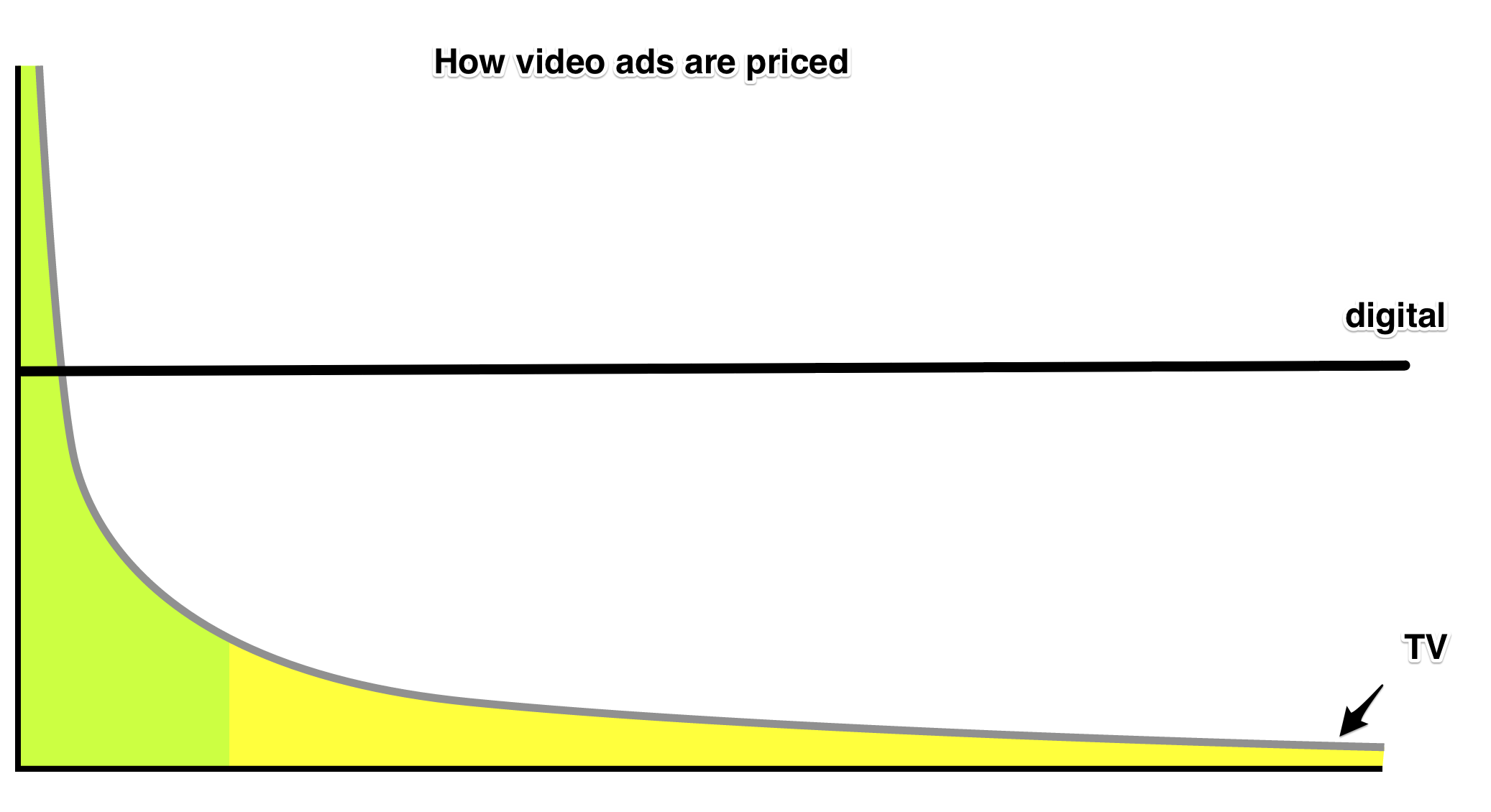I’m a Netflix customer, I pay the $7.99/month for the service, it’s great. In particular I feel like I’m recreating the Discovery channel experience when I was younger, watching documentaries and then movies/tv shows as I want.
I think they are over hyped a bit, their recommendations recommend things Netflix knows I’ve watched, they could do with a social component (ala Spotify) or at least a way to recommend to friends.
But that aside I was thinking the other day, what if they opened up a free ad supported version?
1) I think most current customers would keep paying
The price is incidental really.
BUT
2) It would open up a big market
Those that don’t want to pay that extra part, would suddenly have access. Now, in reverse this is what Hulu tried to do, go ad supported first then add premium. But I think the Netflix model (partly due to their dvd revenue business) has allowed them to build their loyal customer base.
3) It would generate equivalent revenue
The video advertising market has progress a lot in the last few years, with even AOL saying last year they were selling out their inventory. So what is different now is that brands want to buy more video ads online, they love the targeting and it’s a great supplement to the rest of their mix. Lets say Netflix could sell it at $0.10 CPV, half of what you’d pay on YouTube. That means a customer would only have to watch 80 ads/month to make the revenue.
The average american watches 5 hours/day, if Netflix was getting 30% of that viewing time, that’s one 30 second ad every 20-30 minutes over the month.
Update: And it actually turns out the current subscriber averages exactly that.
4) It could even produce upside
Depending on how well the ads are targeted, they could even ask for more. In this scenario below I’ve given a ranges of CPVs to figure out the ads per hour needed to match it.

You can download my excel here if you want to have a play: NetFlix Calculation. But it shows at the higher end you wouldn’t need an ad every hour.
5) Hang on, why isn’t TV already doing this?
Quite simply, their model is sold on reach & frequency, they make more by selling more (natural) but at an incremental discount they have lost value in the long tail. Viewer 1,000,008 is less valuable than viewer 500,000 in the tv selling model. In digital, they are as valuable. TVB have an example here of a cost of $1.98 per 1000 homes.
See this, Price vs Audience size.

—
For the sake of this post I haven’t gone into, TV production costs (as Netflix needs this in the eco-system to provide), change in acquisition and/or change in product. My view is Netflix has the potential to grow in the eco-system, not replace the eco-system. In that change it would also have to pick up components that broadcaster provide.
As HBO cuts the cord this coming March, Netflix sits on a goldmine really, what are they going to do?

